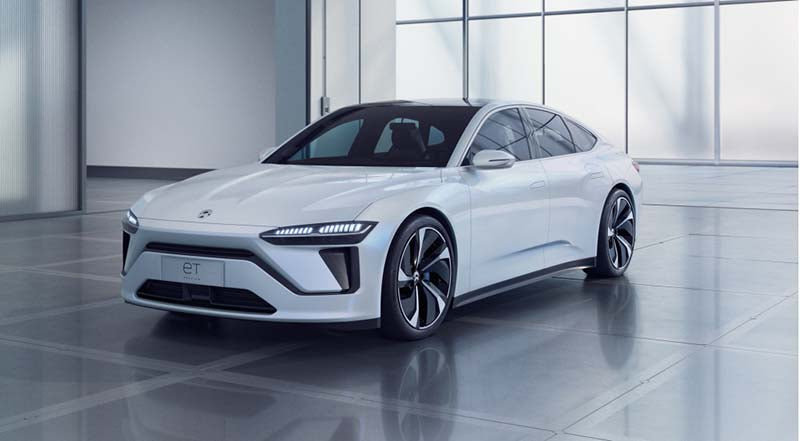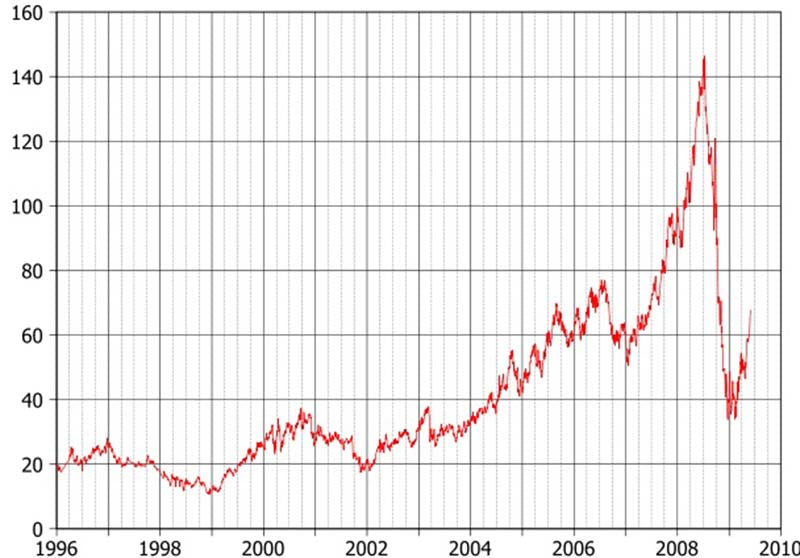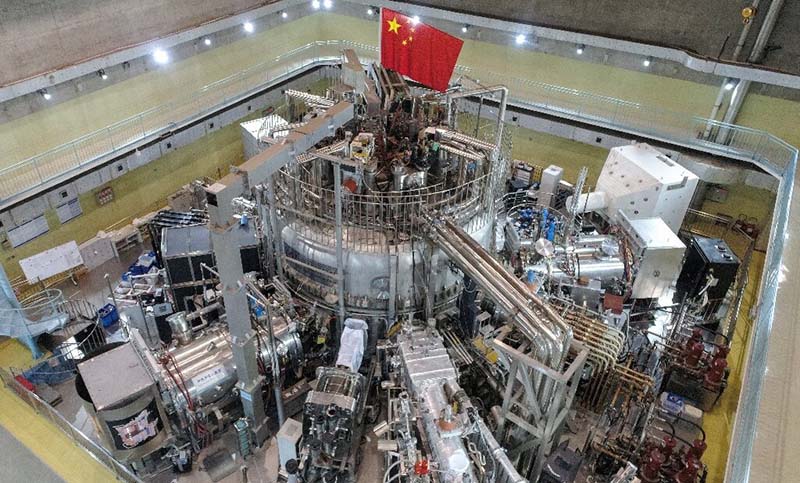
If business as usual, then in Chicago, the high temperature above 90 degrees Fahrenheit (about 32 degrees Celsius) may increase from the current 10 days a year to 75 to 90 days; while in China, extremes that were previously possible every 20 years Heatwaves can occur every 2-3 years. ——Speech by U.S. Secretary of Energy Steven Chu at Tsinghua University in July 2009
To maintain the current lifestyle and quality of life in the future, many changes must be made from now on, which has been a topic of discussion in recent years. Similar remarks from leaders in politics, business and academia are frequently heard. The transportation industry is not only a major player in energy consumption and exhaust emissions, but also an indispensable economic pillar. Such information is of special significance to the automotive industry. Globally, the overall trend of people using private cars to achieve mobility will continue in the future, and more and more cars will be driving on the road. Therefore, the automotive industry is exploring and developing new powertrains that are more economical, environmentally friendly and sustainable than traditional powertrains.
Urgent environmental task
For thousands of years, human beings have been "fighting with the sky" and fighting against nature to obtain living space and improve living conditions. This is a process of human development in harmony with nature. Then things changed. Over the past 250 years, human beings have continued to use technological means (steam engines, mineral and oil extraction, building dams, etc.) to affect the natural environment with such intensity and scope that today's nature must be protected , to keep it away from human intervention, and to rest and recuperate. Humans have "exhausted" and destroyed nature through massive exploitation of underground mineral deposits and altered natural environment conditions. Desertification, air pollution, and reductions in drinking water are nature's "rebound" and "self-defense" against this. The process of disharmony between man and nature will inevitably deteriorate the quality of human life and threaten the foundation of human existence.
A problem closely related to the consumption of fossil fuels is the emission of harmful substances. The application effect of three-way catalytic converter and oxidation catalytic converter shows that there is still great potential to be tapped in technology to reduce the emission of harmful substances from automobiles, such as carbon monoxide (CO), nitrogen oxides (NOx) and hydrocarbons. and harmful substances in vehicle exhaust emissions pollute our environment in many ways, with impacts on a national, regional and global scale.

Figure:Greenhouse Effect
The concept of "greenhouse effect" is familiar to the world. It refers to the phenomenon of human-induced warming of the earth's atmosphere. Carbon dioxide is the main culprit in the greenhouse effect, but the role of methane and nitrogen oxides cannot be underestimated. Numerous simulations show that if the carbon dioxide content of Earth's atmosphere continues to increase, the global average temperature could rise by several degrees. This was confirmed in 2006 by several weeks-long summers in some parts of Europe and China. Climate change caused by the greenhouse effect will have unpredictable human impacts, ranging from desertification of the land to the melting of polar glaciers, and finally to the rise of sea levels.
Another, more global problem is that nitrogen oxides (NOx) destroy the atmospheric ozone layer. The thinner the ozone layer, the more holes there are, and the more intense the radiation of the ultra-ultraviolet rays, invisible in the solar spectrum, to the Earth's surface. Ultraviolet rays can damage the genetic cells of life on Earth. There are parts of Australia with severe ozone depletion, where skin cancer rates are many times higher than elsewhere.
Regional problems related to harmful substances (nitrogen oxides, sulphur dioxide, ammonia and nitrogen compounds) are mainly manifested in the acidification of land and forests and the over-nitrogenation of soil and water sources due to fertilization. The radiation of sunlight causes nitrogen oxides and hydrocarbons to form ozone molecules, which in turn form harmful gases. Road traffic is responsible for about half of carbon monoxide, nitrogen oxides and hydrocarbons emissions worldwide. A particularly pressing issue for humans is the greenhouse effect caused by carbon dioxide. Although road traffic currently accounts for only about 12% of the total carbon dioxide emissions, the global total number of vehicles has a strong growth trend. If the current technology level remains unchanged, carbon dioxide emissions will increase by 1 to 2 times in the next 100 years. is quite possible.
The contradiction between energy supply and demand is further tense
The development of human civilization has been largely dependent on the use of energy. The use of fire made a leap in the development of human history. The earliest available fuel was wood, a raw material that was ubiquitous and can be continuously regenerated. The first industrial revolution, from the mid-18th to the early 19th century, saw massive consumption of coal, a fossil fuel. The steam engine, the first mechanically driven agricultural locomotive, also used coal as fuel. The second industrial revolution, about 100 years after the first, started to use oil as a fuel. With the invention of the internal combustion engine and diesel motor, petroleum has entered the historical stage of human development as a fuel. Since the 20th century, industrial and domestic energy demand has continued to grow, and nuclear energy and natural gas have also joined the ranks of major energy sources.
The first oil crisis occurred in 1973, and it was also the first time that OPEC countries exerted political influence on Western industrial countries by reducing oil supply. The crisis has made the world realize that fossil fuels are not available indefinitely. Limited fossil fuel reserves and rising energy demand are a pair of increasingly acute contradictions, highlighted in the following three aspects:
(1) Western industrial countries consume more and more energy. Products and manufacturing processes are becoming more and more complex, and the number of power-consuming components in vehicles such as lights, radios, televisions, satellite navigators, and various electronic sensors and controllers has been growing.
(2) The population continues to increase. In 1804, the global population reached 1 billion for the first time, and on December 10, 1999, the official population reached 6 billion.
(3) Industrialization in developing countries is also a factor in rising energy demand. In Europe, the average person consumes about 5 tons of coking coal energy per year; in the United States, it is 13 tons; and in developing countries, the average is only 1 ton. About 2 billion people around the world do not have access to electricity yet. Therefore, the industrialization process underway in the corresponding country will inevitably lead to an increase in global energy consumption.

Figure:1996-2010 oil price trend chart (unit: US dollar / barrel)
More than 90% of the world's energy consumption comes from the consumption of coal, oil and natural gas, that is, through the burning of fossil fuels. Experts estimate that the oil, which is essential for transportation, is only enough for about a hundred years if calculated according to the current consumption pattern and scale, of course, this may be a pessimistic estimate. If it is conservatively assumed that energy consumption increases by 1% per year, the useful life of oil will be reduced by 10 years. The United Nations International Energy Agency predicts that there will be energy shortages from 2010 onwards. In the early stages of energy shortages, a particularly severe crisis may not occur. But if the prediction comes true, non-renewable energy sources such as coal, oil, natural gas and uranium will be exhausted in more than 200 years, and no one can imagine the level of energy prices in the future. Fossil fuels (oil, coal, and natural gas) as raw materials can produce more valuable chemical products, and it would be a shame to use them only as fuel. Such raw materials, which are consumed indiscriminately by humans today, will become very scarce in the future.
In August 2009, Birol, chief economist of the International Energy Agency, said that the global oil depletion speed has exceeded expectations, and the approaching energy crisis will pose a hazard to the global economic recovery. A recent assessment by the International Energy Agency of more than 800 major oil fields around the world shows that most have passed their peak production. Higher oil prices will lead to higher prices, and since the global economy is still very fragile at that time, high oil prices will derail the economic recovery. One day, the oil will run out. We must give up our dependence on oil before it leaves and prepare for that day.

Figure:Forecast of various types of energy reserves
In the era of scarcity of fossil fuels, where does grid electricity come from?
Most of the traditional power generation methods rely on fossil fuels. Electric vehicles (pure electric vehicles or fuel cell vehicles) consume electrical energy, both now and in the future. It is natural to ask, in an age of scarcity of fossil fuels, where will the energy needed to power the grid come from?
Another energy carrier, uranium, comes to mind, which is currently used as a raw material for large-scale power generation. There are about 400 nuclear power plants based on the principle of nuclear fission, covering about 7% of today's energy needs. We know that the reserves of uranium are also limited, and the reserves of uranium in nature are only sufficient for about 100 years. If the nuclear power plant generates electricity according to the current principle of nuclear fission reaction of uranium and plutonium, then the usable period of uranium and plutonium stock can be predicted. In theory, value-added reactor technology could solve this problem. However, the world has not yet overcome this technical problem, and it is still far from practical power generation. Similar to the principle of generating energy from the sun, huge energy can be obtained by means of hydrogen isotope thermonuclear fusion reaction, which is generally optimistic about the way to solve future energy problems. However, nuclear fusion power generation is still in the early stages of research. If commercialized nuclear fission power plants are an option to meet the world's energy needs, nearly 10,000 nuclear power plants will need to be built. At this rate, a nuclear power plant will need to be operational every four days for the next 100 years so that alternative energy sources are available once fossil fuel reserves are exhausted. Obviously, this is an almost unrealistic solution.

Figure:China's isotope thermonuclear fusion reactor
In the long run, it is a historical inevitability that electric vehicles will replace internal combustion engine vehicles as human means of transportation. However, in the initial stage of the popularization and application of electric vehicles, only by gradually increasing the proportion of renewable energy power generation in the power grid can fundamentally solve the energy problem and the pollution caused by emissions. Much hope is placed on renewable energy sources, ie hydropower, wind, solar, geothermal and biomass to generate electricity and heat. Although the cost of hydropower is only one-third of that of fossil fuels, and the price of hydropower is relatively stable, hydropower is subject to geographical conditions and may also lead to changes in the local ecological environment. Wind power generation is economical and pollution-free, but its safety is constrained by intermittency and unreliability. In addition, the use of renewable energy generation technologies such as solar energy, geothermal energy and biomass energy is too expensive and will not be reduced for a long time. According to current living and production patterns, even the optimal use of all renewable energy sources cannot fully meet future energy demands. The measures that can effectively delay the exhaustion of fossil fuels at this stage are to implement strict energy-saving measures in technology, to continuously strengthen the awareness of energy-saving in people's habits, and to increase the energy consumption chain formed from primary energy extraction to end-user energy consumption (such as Well -to-Wheel) to improve overall energy utilization. Similar to the Internet of Information (Internet), it can be envisaged to build an energy Internet (Enternet), that is, with many scattered renewable energy power generation devices as "grid terminals", and large power generation devices (such as nuclear power plants, large-scale water conservancy power generation) as "grid terminals". Servers” to establish a distributed public grid and realize energy sharing. In the area centered on the grid terminal of renewable energy (solar energy, wind energy, etc.), the development of electric vehicles nearby is a model that can be tried in the early stage of the popularization and application of electric vehicles.

Figure:Develop Electric Vehicles Nearby Relying on Renewable Energy
Reflecting on the living, production and transportation patterns of industrialized countries that have continued to this day "as a model" is a deep social practice that must be carried out in the future to deal with energy problems globally. This practice is revolutionary and difficult, but it may provide a more feasible solution.
Thinking about traffic patterns
The existing traffic mode is developed on the basis of the internal combustion engine power system, which naturally creates an environment that is more conducive to the development of diesel locomotives. As a new type of transportation, electric vehicles are bound to be at a relative disadvantage in the existing traffic mode. Therefore, the future development of electric vehicles depends to a large extent on the change of transportation mode, and even the revolution of transportation mode. In fact, the development of electric vehicles and the change of transportation modes are also mutually promoting and promoting each other. At present, the world's car ownership is about 800 million, and it is increasing at an annual rate of 30 million. It is expected that the global car ownership will reach 1 billion by 2010. According to a long-term estimate by the U.S. Department of Energy, global car ownership will grow to 3.5 billion by 2050, with developed countries roughly doubling and developing countries 15-fold. Under the framework of traditional transportation modes, on the one hand, the global oil supply will be unsustainable and unsustainable; on the other hand, the development of new power vehicles (such as electric vehicles, etc.) will be difficult. Therefore, the transformation of vehicle power system and the change or revolution of transportation mode are the general trend.
Future urban and rural planning also needs to undergo some changes to promote and adapt to the development of electric vehicles. Electric rail transit (such as light rail and subway, etc.) should be the first choice for future urban transportation modes due to the fixed track, punctuality and large passenger capacity. In urban and rural planning, large-scale residential areas, work areas and shopping and entertainment areas can be connected by rail roads. Corresponding electric car rental stations are established at various stations of rail transit to provide people with electric vehicles or electric mopeds to meet people's transportation needs within the station area.
Future urban and rural planning also needs to undergo some changes to promote and adapt to the development of electric vehicles. Electric rail transit (such as light rail and subway, etc.) should be the first choice for future urban transportation modes due to the fixed track, punctuality and large passenger capacity. In urban and rural planning, large-scale residential areas, work areas and shopping and entertainment areas can be connected by rail roads. Corresponding electric car rental stations are established at various stations of rail transit to provide people with electric vehicles or electric mopeds to meet people's transportation needs within the station area.
"Carsharing" is also a new mode of transportation suitable for the development of electric vehicles. A group of people share a vehicle provided by a company without having to pay for the high purchase and maintenance costs of electric vehicles. Companies that provide electric car rental services focus on charging electric cars, and people can rent a fully charged electric car in a specific parking lot, regardless of the charging time. If the travel distance is long, you can also change to another electric car at the rental station in the middle of the journey. In the early stage of the development of electric vehicles, there are inevitably some problems, such as high cost, incomplete infrastructure, and short driving range, which may be alleviated to a certain extent through this carpooling model.
For some relatively concentrated renewable energy power stations, compared with the city as the center, developing the electric vehicle industry with these power stations as the center can reduce the loss of electric energy transportation and be more economical. Taking hydropower stations as an example, if the electric vehicle traffic mode can be implemented first in these areas, it will not only improve the efficiency of hydropower generator sets, but also play a demonstration role, thereby promoting the development of the environmental protection tourism industry in the region.
Electric Vehicle Outlook
It can be predicted that the internal combustion engine vehicles will still be the main force of transportation at this stage to the next 50 years. Although the application of some new technologies (such as gasoline vehicle exhaust catalyst, diesel vehicle carbon black powder filter, etc.) can effectively reduce the emission of harmful substances, with the rapid increase in the number of vehicles, the pollution caused by internal combustion engine vehicles to the environment cannot be avoided. underestimate. In addition to this, emission standards continue to rise, oil prices continue to rise, and the cost of using internal combustion engine vehicles will also rise. Under this trend, the intervention of electric vehicles has become inevitable.
From a macro perspective, the development of electric vehicles has reached a stage where environmental, energy and transportation modes must be comprehensively considered. From a microscopic point of view, for different electric vehicles, the focus of future technological development is also different.

Figure:Pure Electric Vehicles
The development of pure electric vehicles depends on the development of battery technology and electric motor technology. These two directly determine the key performance of such a car's driving range, vehicle power and handling. At present, the development of batteries will develop in the direction of high energy density, light weight, long life and wide temperature applicability. The electric motor technology is mainly developed towards high energy conversion efficiency and good vehicle dynamic characteristics. In addition, some new technical concepts, such as Plug-in and power battery replacement technology, can make up for the short driving range of pure electric vehicles to a certain extent.
The main problem facing the development of fuel cell vehicles is that the expensive electrode catalyst material "platinum" is scarce in reserves, and it is necessary to find alternative catalysts to realize the sustainable development of fuel cell vehicles. At the same time, it is necessary to further reduce the prices of solid polymer membrane materials and hydrogen storage alloys. In this way, zero-emission, high-efficiency fuel cell vehicles can truly be practical.
The future car development roadmap proposed by the Boston Consulting Group in the United States believes that pure electric vehicles will be the ultimate goal of future car development, while fuel cells only play a role as a tool (range extender) to increase the mileage of electric vehicles for a period of time. . However, we know that pure electric vehicles and fuel cell vehicles are developing in parallel at this stage. Taking the history of electric vehicle development as a guide, if people find suitable electrode materials earlier, greatly improve the energy density of batteries, and finally solve the problem of short driving range of pure electric vehicles, then the above prediction may come true. On the contrary, if the problems of hydrogen production, transportation and storage are solved earlier, the cost of fuel cell stacks can be greatly reduced, and a fuel cell catalyst with sustainable reserves that can replace platinum can be found, then, the ultimate development of future automobiles. Why can't the target be fuel cell vehicles? All this has to wait for the magician of time to reveal.
















